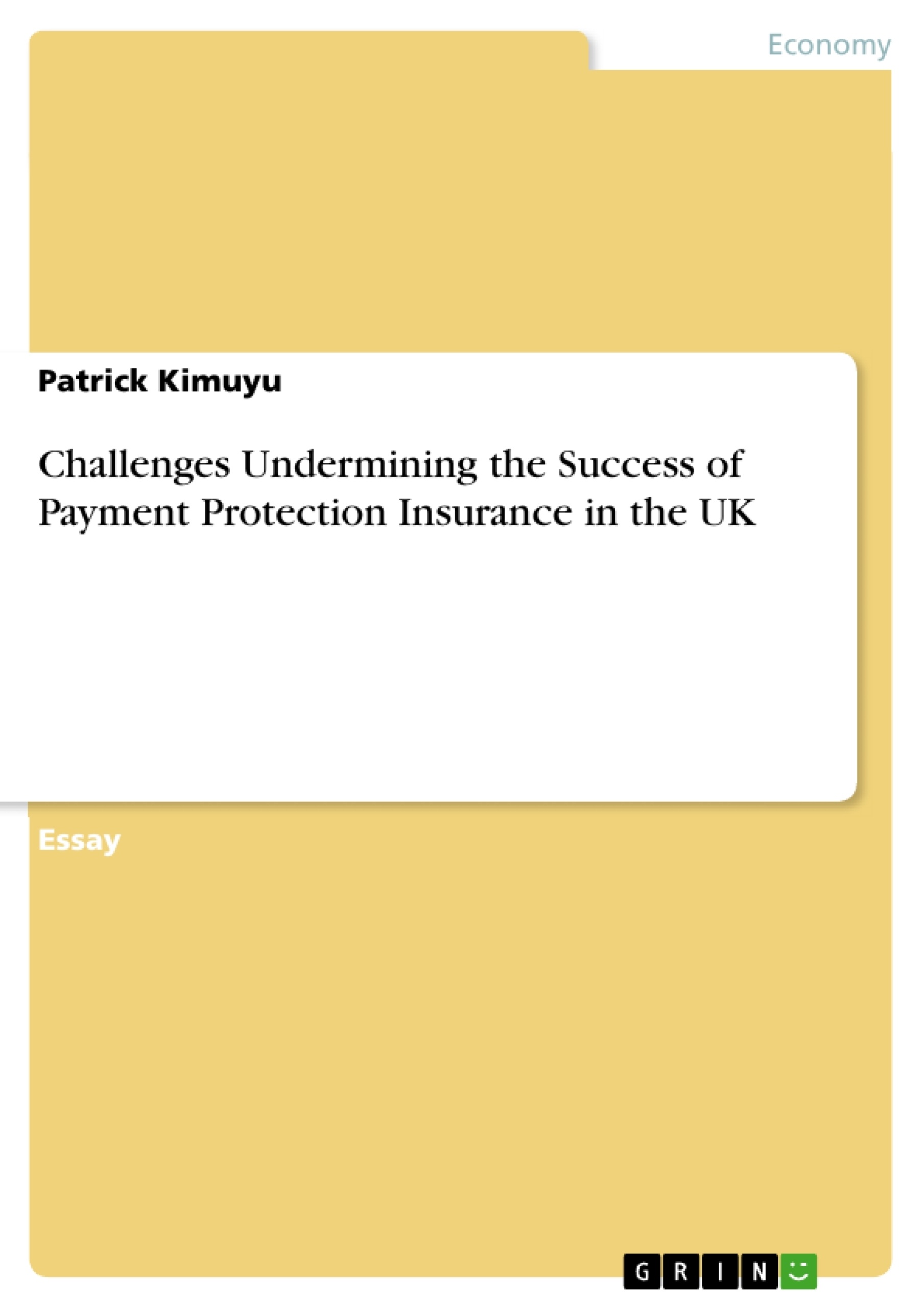The main objective of this report is to understand the concept of PPI, explore the process lenders have adopted over the last 20 years in providing customers with PPI, and the controversy which evolved in the UK regarding the provision of PPI from a consumer, regulation and retail perspectives.
Payment Protection Insurance (PPI) is a form of payment to customers that acts as a cover for the monthly repayments of loans owned to them by financial institutions such as the banks and insurance firms in situations when the customer becomes unemployed, falls sick or dies or even in case of an accident. Over the years, PPI has attracted increasing debate especially in the UK market following various concerns such as miss-sold products to customers who took loans. This concern led to some of the financial institutions in UK including HSBC to stop the progress of selling PPI in most of its branches in 2007, including personal loan protection plan, small business loan protection, cardholder repayment loan, mortgage repayment protection, and flexiloan repayment protection (Financial Ombudsman Service. 2011).
Inhaltsverzeichnis (Table of Contents)
- Introduction
- Nature of PPI and Limitations
- The Process Lenders Adopted Over the Last 20 Years in Providing Customers with PPI
- The Controversy in the UK Regarding the Provision of PPI
- Conclusion
Zielsetzung und Themenschwerpunkte (Objectives and Key Themes)
This report aims to investigate Payment Protection Insurance (PPI) in the UK, specifically focusing on the process lenders have adopted over the last 20 years in providing PPI to customers, and the controversy surrounding its provision from consumer, regulatory, and retail perspectives.
- Nature of PPI and its limitations
- The process of providing PPI by lenders over the past 20 years
- The controversy surrounding PPI mis-selling in the UK
- The role of regulation in addressing PPI mis-selling
- The impact of PPI mis-selling on consumers
Zusammenfassung der Kapitel (Chapter Summaries)
- Introduction: Provides a brief overview of PPI and its purpose, highlighting the increasing controversy surrounding the product in the UK market, particularly concerning mis-selling. The report aims to explore the concept of PPI, the historical process of providing it to customers, and the controversy surrounding its provision.
- Nature of PPI and Limitations: Examines the limitations and terms of sale of PPI, focusing on the potential value for money concern. It highlights the debate surrounding PPI premiums, which can increase the total cost of the policy for the customer. The chapter also addresses the impact of varying PPI prices depending on the lender, emphasizing the impact on consumers.
- The Process Lenders Adopted Over the Last 20 Years in Providing Customers with PPI: Discusses how PPI policies were often not sought out by customers in the past 20 years, leading to widespread claims of customer unawareness. The chapter explores the role of commission-based promotions and the eventual widespread mis-selling of PPI, fueled by large commissions and questionable sales practices.
- The Controversy in the UK Regarding the Provision of PPI: Delves into the controversy surrounding PPI mis-selling from the perspectives of consumers, regulation, and retail providers. The chapter explores the concept of mis-selling, identifying factors contributing to its acceleration in the 2000s, including incentive structures, bundling, inadequate consumer information, poor staff training, and inadequate suitability checks.
Schlüsselwörter (Keywords)
Payment Protection Insurance (PPI), mis-selling, regulation, consumer protection, lending practices, financial institutions, controversy, UK market, premiums, commissions, product suitability, customer awareness, consumer rights.
- Citar trabajo
- Patrick Kimuyu (Autor), 2018, Challenges Undermining the Success of Payment Protection Insurance in the UK, Múnich, GRIN Verlag, https://www.grin.com/document/424114



